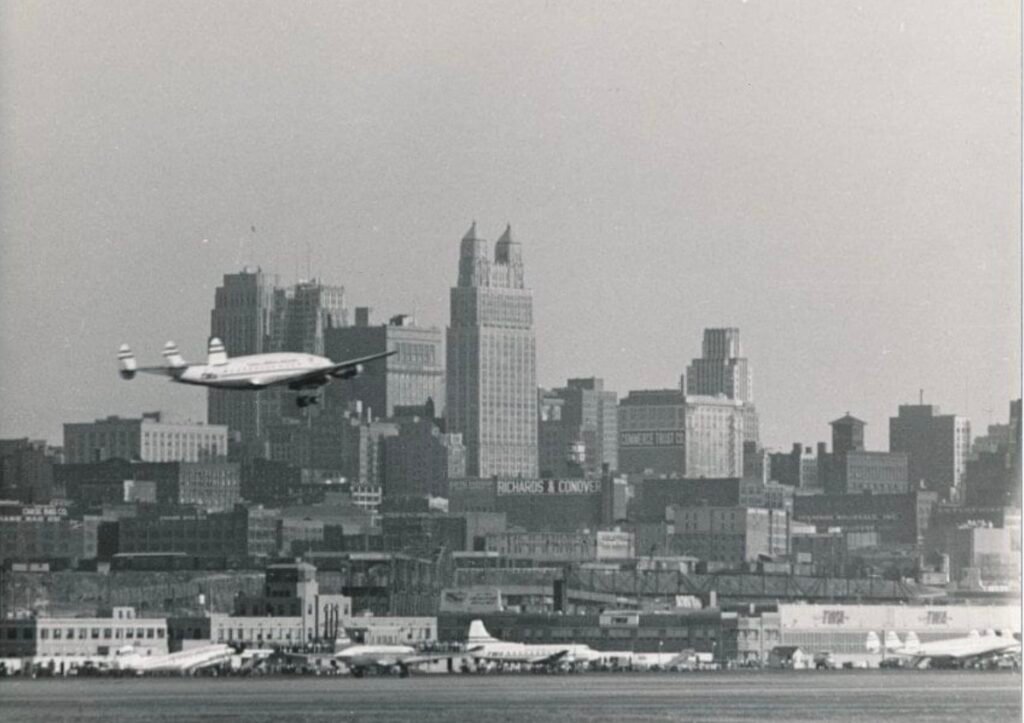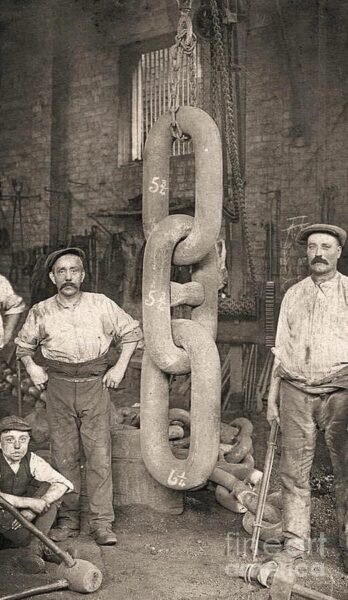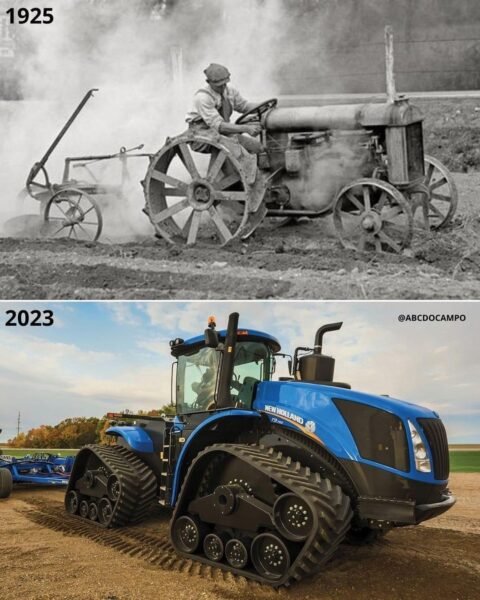In the heart of the Midwest, Kansas City’s Downtown Airport emerged as a beacon of modern aviation in the 1950s. This decade marked a golden era for the airport, reflecting a period of rapid growth and transformation in the aviation industry. As airplanes became more advanced and air travel more popular, the Downtown Airport stood at the forefront of connecting Kansas City to the rest of the nation and beyond.
The 1950s at the Downtown Airport were defined by bustling activity, the hum of propeller-driven aircraft, and the promise of new horizons. This era was not just about technological advancements in aviation but also about the broader cultural and economic shifts that air travel brought to the region.
This period of aviation prosperity in Kansas City mirrored other significant cultural and historical developments of the time. For instance, the 1970s saw the rise of iconic attractions like Worlds of Fun, capturing the spirit of innovation and excitement that characterized the era. Delve into this nostalgic journey with “A Blast from the Past: The 1970s Heyday of Worlds of Fun,” highlighting another facet of Kansas City’s rich history.
As we explore the Downtown Airport’s story in the 1950s, we’ll uncover how it not only shaped the city’s aviation landscape but also left an indelible mark on its economic and cultural fabric.

The Birth and Early Years of the Downtown Airport
The story of Kansas City’s Downtown Airport is a testament to the city’s early recognition of aviation’s potential. Established well before the 1950s, the airport laid the groundwork for what would become a crucial hub in the nation’s aviation network.
Origins and Development: The idea for the Downtown Airport stemmed from the vision to make Kansas City a central point in the country’s burgeoning air network. Its strategic location and innovative design set the stage for it to become one of the most important airports in the Midwest.
Early Infrastructure and Facilities: The airport’s initial infrastructure included runways, hangars, and a terminal building designed to accommodate the era’s aircraft and passenger needs. This infrastructure continually evolved to keep pace with the rapidly growing aviation industry.
Role in Regional Aviation: The Downtown Airport quickly became a vital link in regional and national air travel. Its development mirrored the broader growth of transportation networks, much like the evolution of highway signs which started in 1923 and transformed road travel. To explore this parallel growth in transportation, read “The Evolution of Highway Signs: A Journey Back to 1923.”
In the next section, we will delve into the defining decade of the 1950s, a period that saw the Downtown Airport rise to new heights of activity and significance.

The 1950s: A Decade of Growth and Change
The 1950s marked a transformative era for Kansas City’s Downtown Airport, reflecting the rapid advancements and growing popularity of air travel nationwide.
Expansion and Modernization: During this decade, the airport underwent significant expansions and modernization efforts. New runways were constructed to accommodate larger, more advanced aircraft, and the terminal was upgraded to handle the increasing passenger traffic.
A Hub for Air Travel: The airport became a bustling hub, connecting Kansas City to major cities across the country. It played a pivotal role in facilitating both commercial and private aviation, becoming a symbol of progress and connectivity.
Notable Events and Milestones: The 1950s saw several key events at the Downtown Airport, including inaugural flights of new airline routes and visits by notable figures in aviation. These events highlighted the airport’s growing importance in the national aviation landscape.
Cultural Impact: The airport’s expansion mirrored the dynamic cultural shifts of the 1950s. Just as the Downtown Airport was shaping the city’s identity, elsewhere in Missouri, figures like Jesse James were leaving their mark on history. For a fascinating glimpse into this era, read about “Jesse James in Joplin: A Tale of Outlaws and Unlikely Camaraderie.”
In the next section, we’ll focus on the airlines and flights that defined the Downtown Airport during this bustling decade.

Notable Airlines and Flights of the Era
In the 1950s, Kansas City’s Downtown Airport was a key node in the rapidly expanding air travel network, hosting several notable airlines and historic flights that marked the era.
Major Airlines at the Airport: The Downtown Airport served as a base for several major airlines, which were instrumental in connecting Kansas City to other parts of the country and the world. These airlines included names that have since become legends in aviation history.
Inaugural and Historic Flights: This decade witnessed several inaugural flights taking off from the Downtown Airport. These flights not only marked new routes but also symbolized the advent of faster, more comfortable air travel. Some of these flights went on to become milestones in aviation history, celebrated for their role in making air travel a mainstream mode of transportation.
The Evolution of Aircraft: The 1950s also saw a transition in the types of aircraft operating from the airport. Propeller planes began to give way to the first generation of jet airliners, marking a significant technological leap in aviation.
Impact on Kansas City and Beyond: The presence of these airlines and the launch of new routes had a profound impact on Kansas City’s economy and culture. The airport helped position the city as a vital center in the national and international air travel network.
As we move forward, the next section will explore how the Downtown Airport influenced the local economy and culture of Kansas City during this transformative period.
Impact on Kansas City’s Economy and Culture
The Downtown Airport was more than just a transportation hub; it was a catalyst for economic and cultural growth in Kansas City during the 1950s.
Economic Boon: The airport’s expansion and increased traffic brought significant economic benefits. It created jobs, boosted tourism, and facilitated trade and commerce, contributing to Kansas City’s prosperity.
Cultural Significance: The airport also had a substantial cultural impact. It connected Kansas City to broader national and global trends, making it a more cosmopolitan and dynamic city. The influx of visitors and business travelers added to the city’s cultural diversity.
Legacy and Transformation: From the 1950s to Today
The Downtown Airport’s legacy extends far beyond the 1950s. Over the years, it has undergone numerous changes, adapting to the evolving needs of aviation and the city. Today, it remains an important part of Kansas City’s infrastructure, reflecting its rich history while continuing to serve modern aviation needs.
Conclusion: Remembering the Downtown Airport’s Heyday
The Downtown Airport in Kansas City is a landmark not only of aviation history but also of the city’s growth and development. The 1950s, in particular, were a defining period, showcasing the airport’s role in shaping Kansas City’s trajectory. As we reflect on this era, we appreciate how far aviation has come and the enduring significance of this historic airport.
Additional Questions and Answers
- How did the Downtown Airport influence Kansas City’s architecture?
- The airport’s design and infrastructure influenced local architectural trends, incorporating modernist elements that were reflected in other city developments.
- Were there any famous personalities associated with the airport in the 1950s?
- Yes, the Downtown Airport saw visits from notable figures in politics, entertainment, and business, reflecting its status as a key transportation hub.
- How did the airport contribute to Kansas City’s reputation in the mid-20th century?
- The airport played a pivotal role in establishing Kansas City as a forward-thinking, connected city, enhancing its reputation regionally and nationally.
- What role did the airport play during significant historical events?
- The Downtown Airport served as a critical facility during events like national campaigns and was a part of the broader narrative of post-WWII America.
As an Amazon Associate we earn from qualifying purchases through some links in our articles.




